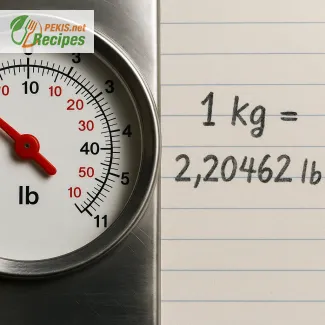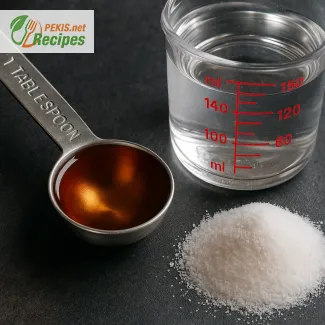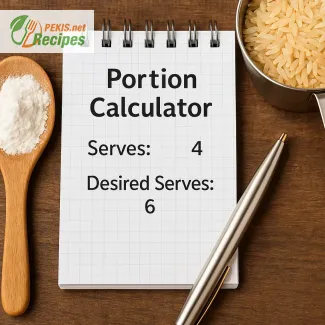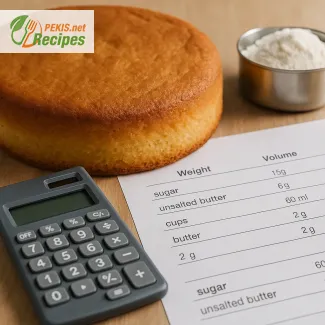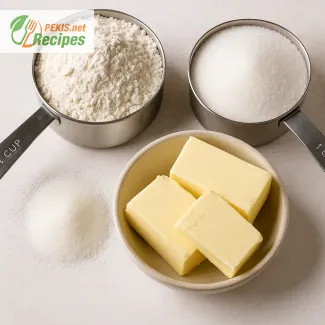
Understanding how many grams are in 2 cups of flour, sugar and butter
Get accurate gram conversions for baking staples in your kitchen
Knowing how many grams are in 2 cups of ingredients like flour, sugar or butter is essential if you're following a recipe that uses different measurement systems. Whether you're a home baker trying out an American cookie recipe in Europe or just aiming for more precision in your baking, converting cups to grams helps you avoid dry cakes, dense bread or overly sweet desserts. In this guide, we break down exactly how much each common ingredient weighs when measured in 2 cups—and explain why volume-to-weight conversions aren’t always as simple as they seem.
Why 2 cups doesn't always mean the same in grams
One of the biggest mistakes people make when converting recipes is assuming that 1 cup of any ingredient equals the same number of grams. But that’s not the case. Cups measure volume, while grams measure weight. This means 1 cup of flour will not weigh the same as 1 cup of butter or 1 cup of sugar.
The weight depends entirely on the density of the ingredient. For example, flour is light and compressible, while butter is solid and dense. Even between types of flour—like all-purpose, whole wheat or almond—the weight of 2 cups can vary significantly. That’s why it’s so important to consult accurate conversion data rather than relying on rough estimates.
How much is 2 cups of flour in grams?
For all-purpose flour, 1 cup typically weighs about 120 grams, which means:
2 cups of flour = 240 grams
However, if you scoop your flour instead of spooning it into the cup and leveling it, you might end up with 10–15% more, depending on how tightly it’s packed. That’s enough to make your cake dense and dry.
Flour types and 2-cup conversions:
- All-purpose flour: 240 g
- Bread flour: ~260 g
- Cake flour: ~224 g
- Whole wheat flour: ~240–260 g depending on grind
How many grams in 2 cups of sugar?
This depends on whether you're using white granulated sugar, brown sugar, or powdered sugar.
- Granulated white sugar: 1 cup ≈ 200 g → 2 cups = 400 grams
- Light or dark brown sugar (packed): 1 cup ≈ 220 g → 2 cups = 440 grams
- Icing sugar / powdered sugar: 1 cup ≈ 120 g → 2 cups = 240 grams
Brown sugar is measured packed into the cup, which increases the weight. Powdered sugar, on the other hand, is very light and tends to settle, so measurements can vary depending on sifting.
How much does 2 cups of butter weigh in grams?
Unlike flour or sugar, butter is sold by weight, so it’s easier to get exact equivalents.
- 1 cup of butter = 227 grams
- Therefore, 2 cups of butter = 454 grams
That’s exactly 4 sticks of butter in the US (each stick is 113.5 g). In European packaging, that’s typically two 250 g blocks, slightly more than 2 cups—but close enough for most recipes.
Butter should always be measured cold and pressed firmly into the measuring cup for accuracy. Softened butter can trap air, resulting in lighter-than-expected weight.
Practical kitchen example: converting a full recipe
Let’s say your American cookie recipe calls for:
- 2 cups of all-purpose flour
- 2 cups of granulated sugar
- 1 cup of butter
Here’s how that translates:
- Flour: 240 g
- Sugar: 400 g
- Butter: 227 g
This gives you a total of 867 grams of core ingredients—useful if you're prepping dough in bulk, scaling the recipe, or converting it for metric baking equipment.
Why accurate cup-to-gram conversions matter
In baking, precision is everything. Unlike cooking, where you can add a pinch of this or a splash of that, baking relies on chemical reactions that occur only under exact ratios of ingredients. Using too much flour dries out your cakes; too much sugar can make cookies spread too far; too much butter can make dough too greasy to handle.
Investing in a kitchen scale eliminates the guesswork. Even if your recipe is in cups, measuring by grams ensures every bake turns out consistently—especially when making doughs, pastries, or delicate cakes.
Are US and UK cups the same?
No. A US cup is defined as 240 ml, while a UK imperial cup is 284 ml. This small difference can lead to a 15–20 g variation per cup, depending on the ingredient. If you're following UK recipes and you're in the US (or vice versa), it's best to convert everything to grams instead of assuming cups will match.
How to convert other ingredients: quick reference
Here are other commonly used ingredients and their 2-cup gram equivalents:
| Ingredient | 2 Cups (grams) |
|---|---|
| Rolled oats | 160 g |
| Honey | 680 g |
| Milk | 480 g |
| Sour cream | 480 g |
| Yogurt | 480 g |
| Chopped nuts | 240 g |
| Cocoa powder | 170 g |
| Chocolate chips | 340 g |
Keep in mind that liquids like milk or yogurt will align more closely with milliliters, and their gram equivalent is almost the same due to their density (1 ml ≈ 1 g).
Advice for accurate measuring
- Use a digital kitchen scale with a tare function for the most accurate results.
- Spoon and level dry ingredients to avoid overpacking.
- Avoid measuring sticky ingredients like honey in cups—weigh instead.
- Remember that temperature, humidity, and altitude can affect ingredient density slightly. Always go by weight when it matters.
For precision, repeatability, and baking success—cups are okay, but grams are better.
